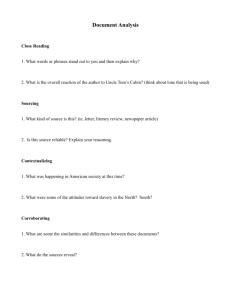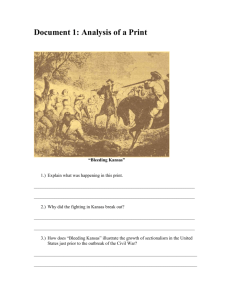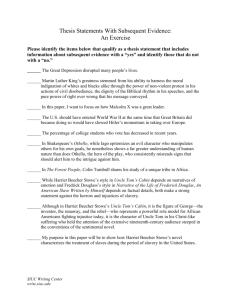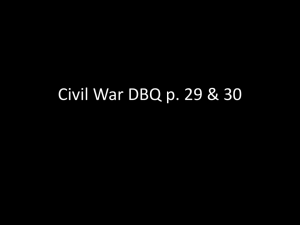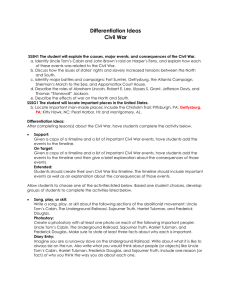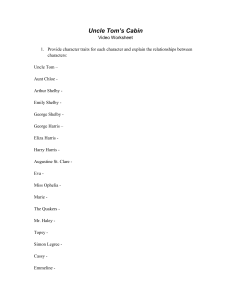Unit 1 Practice Multiple Choice Questions
advertisement
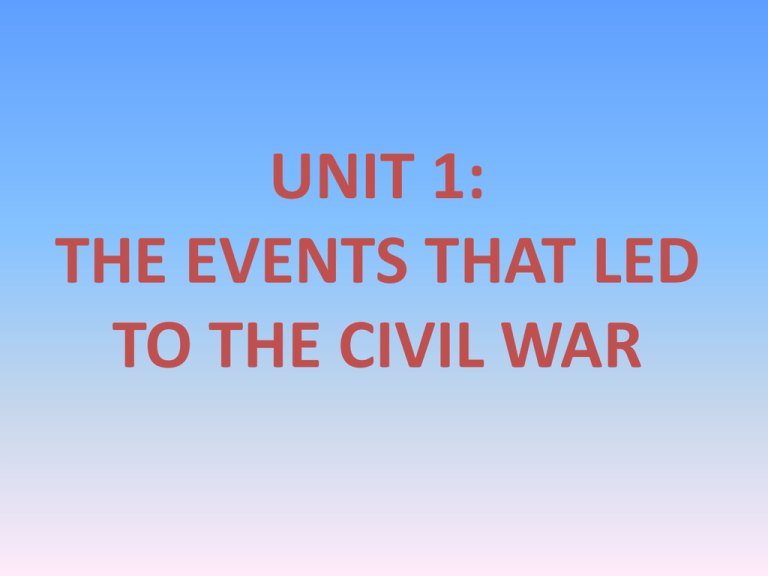
UNIT 1: THE EVENTS THAT LED TO THE CIVIL WAR During the first part of the 19th century, differences between the North, South, and West led to a. b. c. d. Sectionalism Federalism Isolationism Mercantilism During the first part of the 19th century, differences between the North, South, and West led to a. b. c. d. Sectionalism Federalism Isolationism Mercantilism An issue that divided the North and South and led to the Civil War was the a. length of the term of the president b. use of judicial review by the Supreme Court c. balance of power between the states and the federal government d. application of the impeachment process An issue that divided the North and South and led to the Civil War was the a. length of the term of the president b. use of judicial review by the Supreme Court c. balance of power between the states and the federal government d. application of the impeachment process Which heading best completes the partial outline below? I. ________________________________________ A. Uncle Tom’s Cabin published B. Congress passes the Kansas-Nebraska Act C. John Brown leads attack at Harpers Ferry a. b. c. d. Impact of Industrialization Closing of the Frontier Political Leadership Events Leading to the Civil War Which heading best completes the partial outline below? I. ________________________________________ A. Uncle Tom’s Cabin published B. Congress passes the Kansas-Nebraska Act C. John Brown leads attack at Harpers Ferry a. b. c. d. Impact of Industrialization Closing of the Frontier Political Leadership Events Leading to the Civil War Which publication had a direct effect on the attitudes of Northerners toward slavery? a. b. c. d. Common Sense Silent Spring Poor Richard’s Almanac Uncle Tom’s Cabin Which publication had a direct effect on the attitudes of Northerners toward slavery? a. b. c. d. Common Sense Silent Spring Poor Richard’s Almanac Uncle Tom’s Cabin What literary work exposed the evils of slavery? a. b. c. d. Common Sense The Grapes of Wrath The Jungle Uncle Tom’s Cabin What literary work exposed the evils of slavery? a. b. c. d. Common Sense The Grapes of Wrath The Jungle Uncle Tom’s Cabin “$150 Reward [for a Runaway Slave]….I will give $50 reward if taken in Louisville; 100 dollars if taken one hundred miles from Louisville in this State, and 150 dollars if taken out of this State, and delivered to me, or secured in any jail so I can get him again. -William Burke, -Bardstown Kentucky (Sept. 3d, 1838) Which conclusion can be drawn from this newspaper advertisement? a. b. c. d. The Underground Railroad was a failure Slave owners believed that their slaves were property Many enslaved persons became wealthy in the North If slaves reached the North, rewards would not be paid “$150 Reward [for a Runaway Slave]….I will give $50 reward if taken in Louisville; 100 dollars if taken one hundred miles from Louisville in this State, and 150 dollars if taken out of this State, and delivered to me, or secured in any jail so I can get him again. -William Burke, -Bardstown Kentucky (Sept. 3d, 1838) Which conclusion can be drawn from this newspaper advertisement? a. b. c. d. The Underground Railroad was a failure Slave owners believed that their slaves were property Many enslaved persons became wealthy in the North If slaves reached the North, rewards would not be paid In the election of 1860, which region of the country supported John C. Breckinridge? a. b. c. d. North South East West In the election of 1860, which region of the country supported John C. Breckinridge? a. b. c. d. North South East West Which concept is most clearly illustrated by the election results shown in this map? a. b. c. d. Federalism Nationalism Protectionism Sectionalism Which concept is most clearly illustrated by the election results shown in this map? a. b. c. d. Federalism Nationalism Protectionism Sectionalism Which event led directly to the secession of Southern States from the Union in 1860 and 1861? a. election of Abraham Lincoln as president b. passage of the Kansas-Nebraska Act c. adoption of a new fugitive slave law d. decision of the Supreme Court in Dred Scott v. Sanford Which event led directly to the secession of Southern States from the Union in 1860 and 1861? a. election of Abraham Lincoln as president b. passage of the Kansas-Nebraska Act c. adoption of a new fugitive slave law d. decision of the Supreme Court in Dred Scott v. Sanford Which Civil War event occurred first? a. b. c. d. Battle of Gettysburg Assassination of President Lincoln Firing on Fort Sumter Emancipation Proclamation Which Civil War event occurred first? a. b. c. d. Battle of Gettysburg Assassination of President Lincoln Firing on Fort Sumter Emancipation Proclamation
